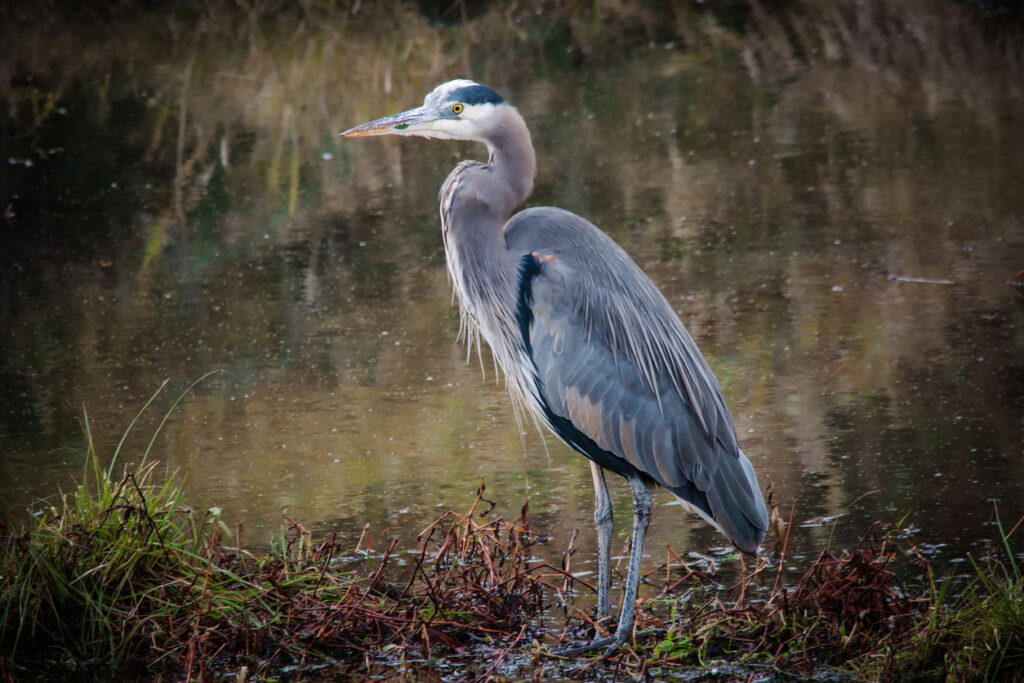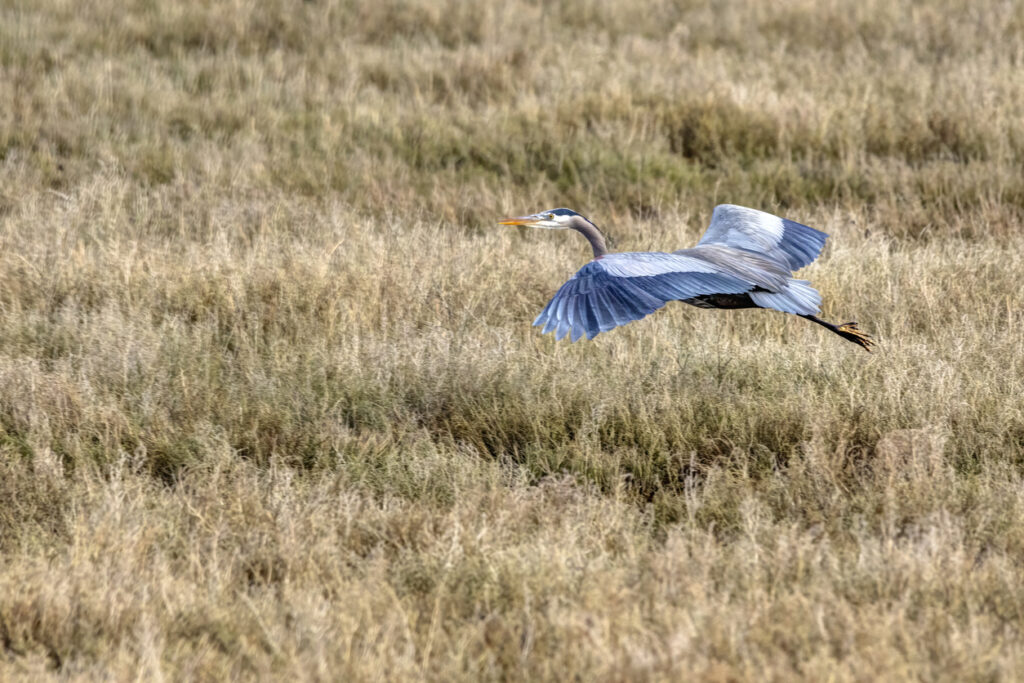For me, spotting a great blue heron has always evoked a sense of connection with nature, even more so than seeing, say, a blue jay, a cardinal or a Canada goose. Maybe it’s because, while certainly not rare, it’s also not common to see a great blue heron in every pond and wetland you pass.
According to birdwatchinghq.com, there are eight types of herons that reside in BC: the great blue heron, the American bittern, the black-crowned night-heron, the green heron, the great egret, the cattle egret, the snowy egret and the little blue heron.
In British Columbia, great blue herons can be found all year round along the coast and in the southern interior. A few birds will travel farther north for the summer, after the breeding season. According to the BC government, there are about 5,000 to 6,000 herons living in the province and although the great blue heron is commonly seen in parts of BC, its numbers are decreasing.
The Great Blue Heron Nature Reserve in Chilliwack in a non-profit organization and charity that is working to preserve the natural features and habitat for great blue herons and other species at risk on their 325-acre parcel, which includes an un-dyked wetland along the Vedder River. This organization offers education programs, camps and workshops, as well as trails and viewing points. The southwestern portion of the reserve is home to one of the largest heron nesting colonies in the Lower Mainland. There are about 90 nests here, active from March to July, and the Nature Reserve states these sites require a significant amount of conservation effort to ensure the long-term viability of the heron population.
Great blue herons, as the name implies, are a large bird, tall, with a long neck and a black stripe over their eye and they’re grey-ish/blue in colour. You’ll typically find them along the edges of rivers, lakes and wetlands, where they like to hunt for their dinner of fish, reptiles, small mammals and even other birds. Great blue herons will nest in large colonies, which can include up to 500 breeding pairs.
The Great Blue Heron Nature Reserve is also a great place for salmon viewing in the fall – chum, coho and pink salmon make their way into the lagoon and Salwein Creek in huge numbers from late October to mid-December.
For more information about the Great Blue Heron Nature Reserve, visit www.chilliwackblueheron.com.



